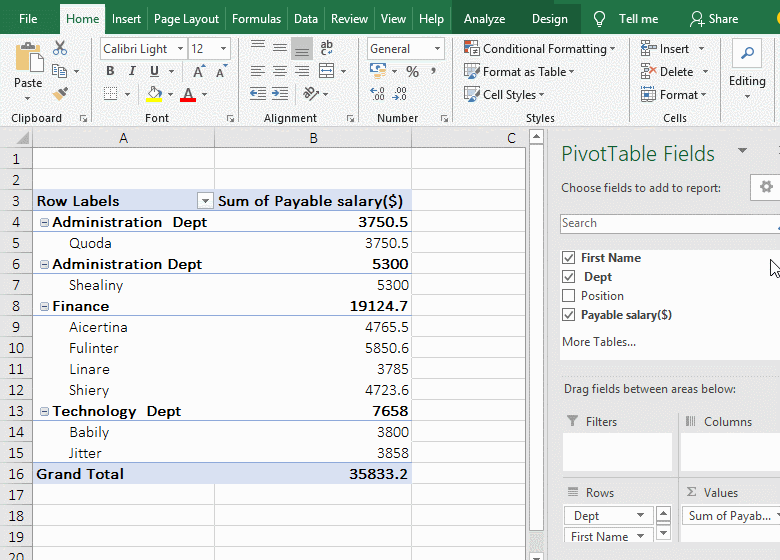

#How to use pivot tables in excel add row update#
You can drag and drop items in the rows/columns/values/filters boxes and it will instantly update the results. Even when you have thousands of rows of data, a pivot table is super fast in summarizing the data. The reason a pivot cache gets generated is to optimize the pivot table functioning. When you create different views using a Pivot Table, Excel does not go back to the data source, rather it uses the Pivot Cache to quickly analyze the data and give you the summary/results.

Excel takes a snapshot of the data and stores it in its memory. To use a Pivot Table efficiently, it’s important to know the components that create a pivot table.Īs soon as you create a Pivot Table using the data, something happens in the backend. Now before we jump into analyzing data using this Pivot Table, let’s understand what are the nuts and bolts that make an Excel Pivot Table.

All you’d see is the Pivot Table name and a single line instruction on the left, and Pivot Table Fields on the right. While the Pivot Table has been created, you’d see no data in it. Else, a new worksheet is created with the Pivot Table.Īs soon as you click OK, a new worksheet is created with the Pivot Table in it.
#How to use pivot tables in excel add row how to#
It’s so simple, you may as well take a few minutes and show your boss how to do it himself. Within seconds, a Pivot Table will answer all these questions (as you’ll learn below).īut the real benefit is that it can accommodate your finicky data-driven boss by answering his questions immediately. This is where Excel Pivot Tables comes in really handy. You’ll have to go back to the data and create new formulas every time there is a change. You can go ahead and use Excel functions to give you the answers to these questions, but what if suddenly your boss comes up with a list of five more questions.


 0 kommentar(er)
0 kommentar(er)
